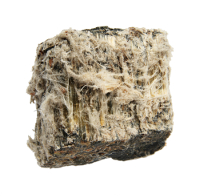About Asbestos

Asbestos is a naturally occurring mineral mined from rock and made up of many small fibres. Asbestos is extremely tough and was widely used in products because of its high resistance to fire and chemicals and its effectiveness as an insulator. The term asbestos is traceable to Roman naturalist Pliny the Elder’s manuscript Natural History, and his use of the term asbestinon, meaning “unquenchable”.
Asbestos fibres are 50 to 200 times thinner than a human hair, can float in the air for a long time, not invisible to the naked eye and can be breathed into the lungs.
Common examples of Asbestos
Due to its durability, asbestos was used in a variety of different ways. Some common examples include:
- Asbestos Cement Sheets
- Tilux/ Duraflex Sheets (bathrooms and kitchens)
- Asbestos cement corrugated roof sheeting (Often called “Super Six” sheeting)
- Asbestos cement guttering, drains & pipes
- Asbestos insulation – pipes and electrical wires
- Asbestos brake pads and linings, and clutch pads.
However, the prolonged inhalation of these fibres can cause serious illnesses including lung cancer, mesothelioma, and asbestosis (a type of pneumoconiosis).
Asbestos is highly toxic, insidious and environmentally persistent material that has killed thousands of Australians, and will kill thousands more this century. The use and manufacture of asbestos is now banned in Australia.
Asbestos History

Asbestos (from Greek ἄσβεστος meaning “unquenchable” or “inextinguishable”) is a naturally occurring mineral that became increasingly popular among manufacturers and builders in the late 19th century because of its sound absorption, average tensile strength, and its resistance to heat, electrical and chemical damage. When asbestos is used for its resistance to fire or heat, the fibers are often mixed with cement or woven into fabric or mats. Asbestos was used in some products for its heat resistance, and in the past was used on electric oven and hotplate wiring for its electrical insulation at elevated temperature, and in buildings for its flame-retardant and insulating properties, tensile strength, flexibility, and resistance to chemicals.
In the early 1900s medical practitioners began to raise concerns that exposure to asbestos was causing deaths of asbestos workers through respiratory diseases and by the 1930s there was a substantial accumulation of scientific knowledge concerning asbestos related disease.
Asbestos products were gradually removed from production during the 1980s. Between 1981 and 1983, asbestos flat sheeting was phased out. In 1985, corrugated products (roofing and cladding) were also taken from production. Asbestos-lined piping was not made after 1987 and in 2003 brake pads and linings ceased to contain asbestos.

The dangers are now well known in Australia. Two out of three homes built between World War II and early 1980s still contain asbestos. Currently each year in Australia 500 men and 100 women develop mesothelioma, and this is expected to rise to 900 new cases a year by 2020.
How can AMAA help you
For more information on the symptoms, treatments and management of asbestos related diseases, please get in touch with the Asbestosis and Mesothelioma Association of Australia (AMAA) on 1800 017 758 or via our contact us form today.